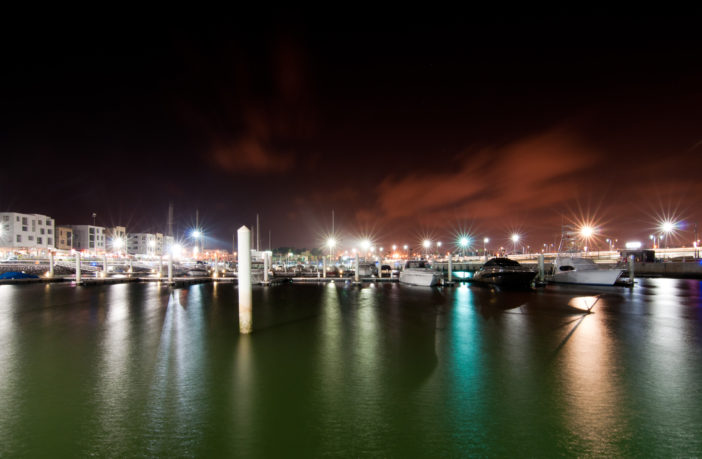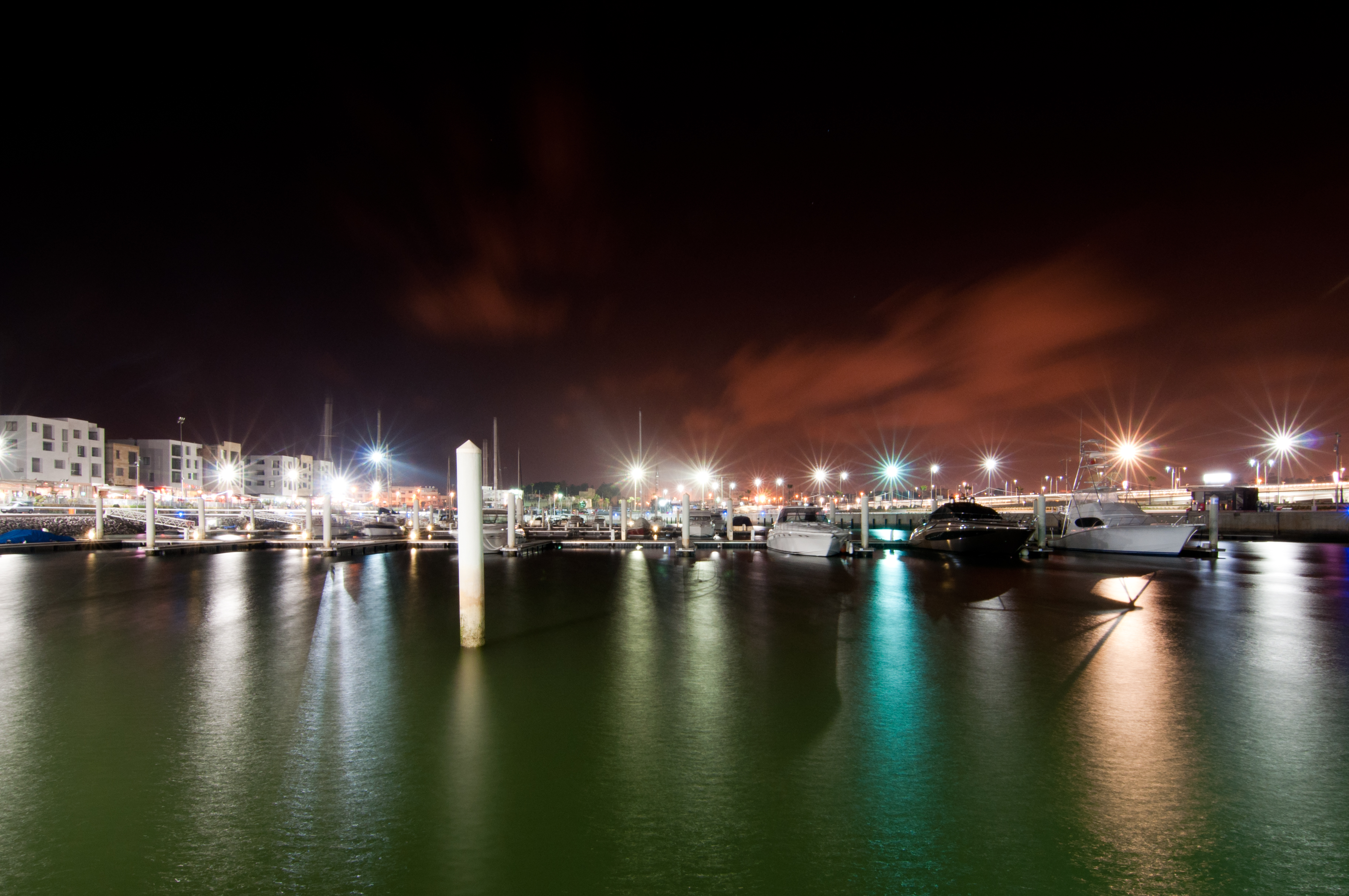Out in the Cold
By Olivia Fore, Contributor
Critics of urban development projects in Morocco say they have failed to trickle down to the overall population’s benefit.
At night, under the orange light of new street lamps, residents stroll along the Bouregreg River. Vendors sell toys and kites; children ride miniature cars on the pavement and musicians entertain a friendly audience.
A new Grand Theater, still under construction, looms in the shadows. A new bridge extends tram service to commuters from the city of Salé, across the river.
The five-year “Rabat City of Lights” program launched in 2014 aims to put Morocco’s administrative capital on equal footing with other major world cities by “promoting its cultural heritage, preserving green space, improving the economy, access to social services, governance and road infrastructure,” according to the country’s Ministry of Culture and Communication. In addition to the theater, bridge and tramline, the government’s approach to meeting that goal includes two highways, a tunnel, marina, modern art museum and cultural center. Still on the horizon is a $375-million, 45-story commercial and residential tower that will be the tallest in Africa.
Boosting urban areas is a model that Morocco has employed elsewhere in recent years, including the massive Tangier Med port facility and high-end development of the Casablanca Marina.
[RELATED: Morocco’s Film Industry Gets Mixed Reviews ]
In Rabat, the government, big local companies, and outside developers already have invested around $850 million. The projects have been carried out with minimum public input, and it is unclear who reaps the biggest benefit. While the monarchy gets to show off a world-class city and developers cash in, the projects have done little to boost the overall economy or put a dent in one of Morocco’s biggest and potentially destabilizing problems, unemployment.
Nationwide, according to the World Bank, unemployment has risen since 2014 from 9.9 percent to 10.8 percent in 2017. Youth unemployment is just under 30 percent. A lack of jobs, hospitals and other facilities led to protests that broke out in the northern Rif region in late 2016, prompting King Mohammed VI to dismiss regional officials. Rabat struggles with similar problems. Experts say officials should be more focused on education and social services. While construction does provide some jobs, there are few benefits and no job security.
There’s no question the new facilities are nice. Farah Cherif D’ouezzan, founder and general director for the Center for Cross Cultural Learning, an educational institution that coordinates cultural and educational activities, says Rabat is more comfortable and connected than ever before in her 25 years of living here. Improvements like the tramline have transformed the way residents move around the city.
Even so, many say the developments are not what they really need. Samad Zahid, 24, an unemployed musician, singles out the marina. “The marina is definitely not made for us because the poor can only see what’s in it, and can’t have coffee or dinner because it’s expensive,” he says.
“The government has to fill the need of the people, offering them school, hospitals, and decreasing the cost of living instead of projects like the marina,” he adds. “All the money spent on these projects is taken from the poor.”
In addition to jobs, young people need volunteer opportunities, associations, and other kinds of engagement, says Arabic teacher Assia Ben Abdelkader, who lives in Rabat’s old medina.
[RELATED: Staying on the Grid in Lebanon]
While official inflation figures are low, Rabat residents say food and housing have become more expensive in recent years. Families are trying to get by on the same income they had seven years ago, says Brahim El Ataoui, maintenance coordinator at the Center for Cross Cultural Learning, who has lived in the medina for 50 years.
“The city is changing, good. It’s a positive, but the power to buy things is going down.”
Aside from 2016, when Morocco was hit by a drought that hurt its agricultural section, the country’s economic growth rate has been solid. The International Monetary Fund estimated 2017 growth at 4.4 percent, and projects a 3.1 percent rate for 2018.
Those involved in the “City of Lights” program include big names in finance and real estate development in Morocco and beyond such as Abu Dhabi-based Al Maabar International Investment and Eagle Hills private real estate company, also based in Abu-Dhabi. Othman Benjelloun, CEO of the BMCE Bank of Africa, is working with the China Railway Construction Corp. and another Moroccan entity, the TGCC Group, on the 45-story tower. Benjelloun, who Forbes lists as the richest man in Morocco, is worth an estimated $1.73 billion.
The governor of Rabat, a royal appointee, oversees the agencies managing the program and reports to the interior minister.
Riccardo Fabiani, a financial analyst at the Eurasia group and expert on North Africa, says infrastructure projects launched without public feedback are like “big cathedrals in the desert,” disconnected from the lives of most people.
For projects such as the Grand Theater, elected city officials had essentially no say, says Omar El Hayni, a financial analyst and member of the Rabat City Council. The city was, however, expected to pick up a percentage of the cost. It was approved in January for a $65 million loan to help pay its share.
So facilities like the Grand Theater go ahead, even though the city already has such a venue and another, the Mohammed VI Theater, is located 60 miles away in Casablanca.
[RELATED: ‘America First’ May Put Africa Last]
Saâd Sobhi, 24, a civil engineer-turned-musician, says the Grand Theater will add little besides a place for international artists to perform.
Big construction projects in major cities draw foreign interest and investment, but the effect is limited, Fabiani says. “We haven’t seen an acceleration in GDP growth, we haven’t seen an increase in investments into the country, we haven’t really seen all the positive impacts that these projects were supposed to bring,” he says.
Those projects are tilted toward big players and do little to help small and medium-sized businesses, Fabiani says. Instead, Morocco ought to be investing in its people, he adds.
The IMF recommends improving education and vocational training to reduce unemployment, especially among young people. Language is an issue, too. Private schools are French based; public schools use Arabic. But Moroccans need French in order to get decent jobs. Even then, they require personal or family connections, as well, the World Bank says in a report.
Additionally, strengthening the social safety network is crucial to making economic growth more inclusive, the IMF says. Without major changes, Fabiani says the number of those who actually benefit from development projects will remain small.
“It’s definitely the monarchy, obviously, and its entourage of big businessmen, Moroccan businessmen, who are basically oligarchs,” he says. “They have interest in the stability of the system, and in getting a slice of the pie.”








